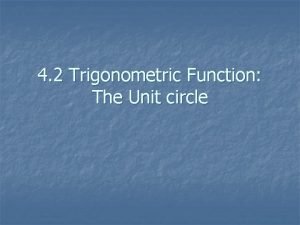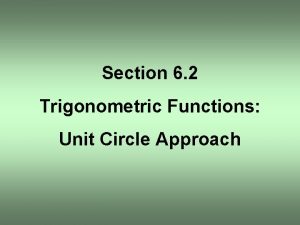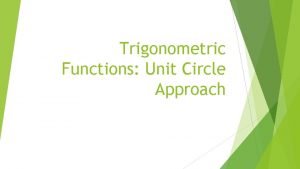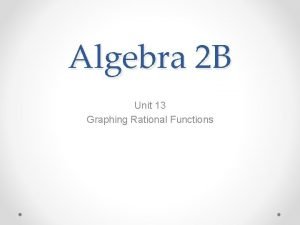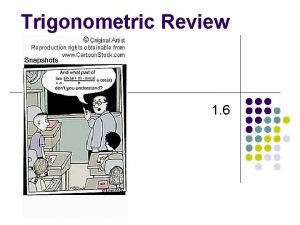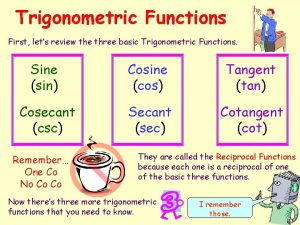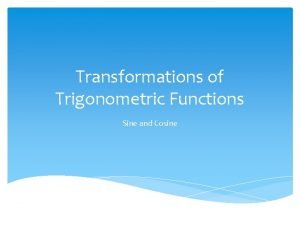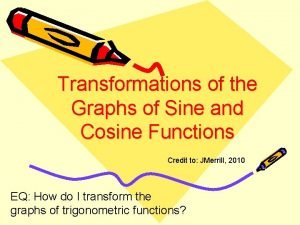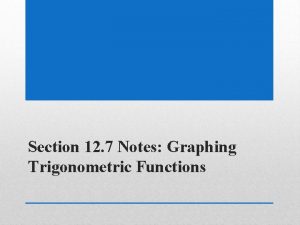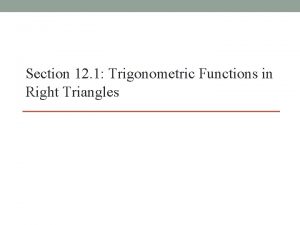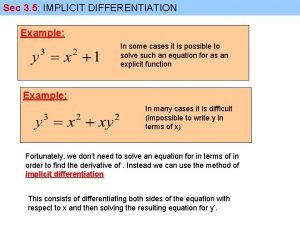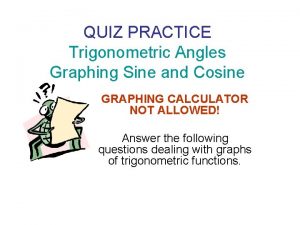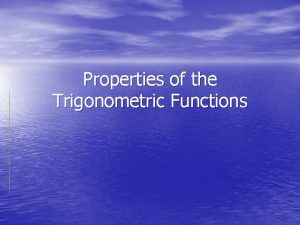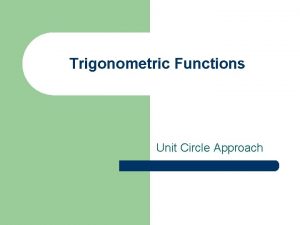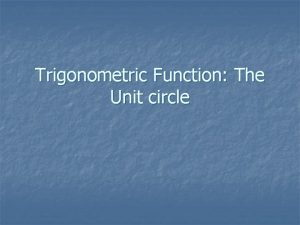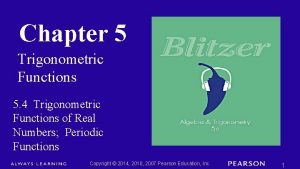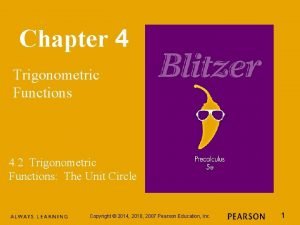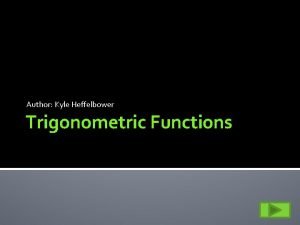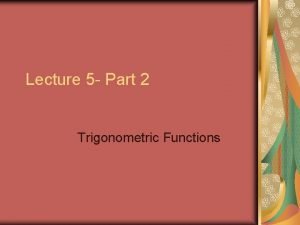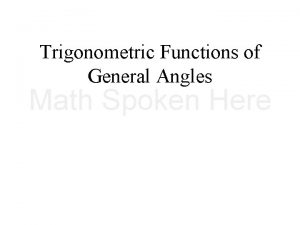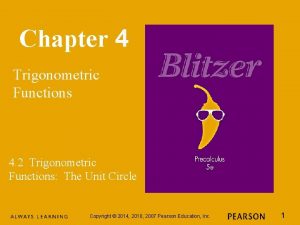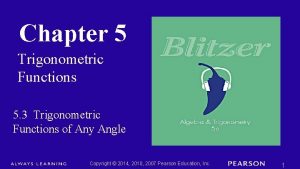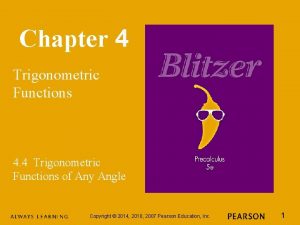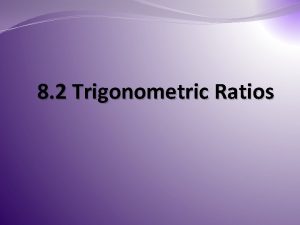Trigonometric Functions The Unit Circle 4 2 Unit













- Slides: 13

Trigonometric Functions: The Unit Circle 4. 2

Unit Circle • The unit circle is a circle of radius 1 with its center at the origin.

Definitions of the Trigonometric Functions in Terms of a Unit Circle If t is a real number and P = (x, y) is a point on the unit circle that corresponds to t, then

Points on the Unit Circle

Example Use the Figure to find the values of the trigonometric functions at t= /2. Solution: The point P on the unit circle that Corresponds to t= /2 has coordinates (0, 1). We use x=0 and y=1 to find the Values of the trigonometric functions

The Domain and Range of the Sine and Cosine Functions • The domain of the sine function and the cosine function is the set of all real numbers • The range of these functions is the set of all real numbers from -1 to 1, inclusive.

Evaluating Trigonometric Functions • Evaluate the six trig functions at each real number. (a) t=л/6 (b) t=5 л/4 (c) t=0 (d) t=л

Evaluate the 6 Trig Functions at t=-л/3

Even and Odd Trigonometric Functions The cosine and secant functions are even. cos(-t) = cos t sec(-t) = sec t The sine, cosecant, tangent, and cotangent functions are odd. sin(-t) = -sin t csc(-t) = -csc t tan(-t) = -tan t cot(-t) = -cot t

Example • If sin t = 2/5 and cos t = 21/5, find the remaining four trig functions

Definition of a Periodic Function A function f is periodic if there exists a positive number p such that f(t + p) = f(t) For all t in the domain of f. The smallest number p for which f is periodic is called the period of f.

Periodic Properties of the Sine and Cosine Functions sin(t + 2 ) = sin t and cos(t + 2 ) = cos t The sine and cosine functions are periodic functions and have period 2. sin = sin 3

Periodic Properties of the Tangent and Cotangent Functions tan(t + ) = tan t and cot(t + ) = cot t The tangent and cotangent functions are periodic functions and have period . tan = tan 2
 Unit circle radians
Unit circle radians Trigonometric functions unit circle approach
Trigonometric functions unit circle approach Trigonometric functions unit circle approach
Trigonometric functions unit circle approach Graphing rational functions cheat sheet
Graphing rational functions cheat sheet Trigonometry cofunction
Trigonometry cofunction Three basic trigonometric functions
Three basic trigonometric functions Partner of sine and cosine
Partner of sine and cosine How to find period from sine graph
How to find period from sine graph 12-7 graphing trigonometric functions answers
12-7 graphing trigonometric functions answers 12-1 trigonometric functions in right triangles
12-1 trigonometric functions in right triangles Implicit differentiation trigonometry
Implicit differentiation trigonometry 9-5 practice graphing trigonometric functions
9-5 practice graphing trigonometric functions Domain and range of trigonometric function
Domain and range of trigonometric function Trigonometric limit identities
Trigonometric limit identities
